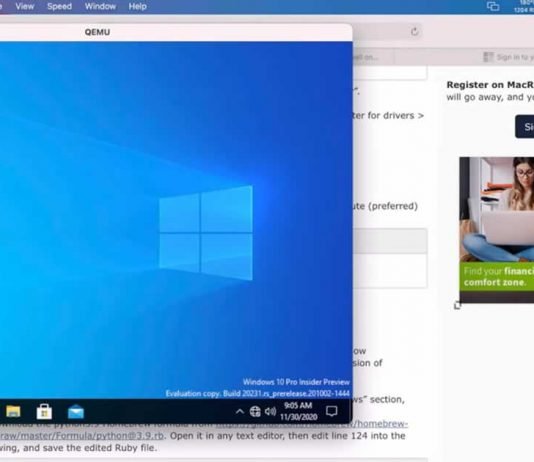Installing Windows 10 on an Apple M1 or on popular GNU / Linux distributions is now possible through virtualization.
Ever since the Apple M1 SoC of Silicon family made an appearance, modding enthusiasts have been waiting to open the new platform that the Cupertino firm has created to motorize its new Mac computers into a replacement for the Intel x86 it used until now. We have already seen how a developer managed to run windows on Mac with M1, and there are also projects for Linux on the way.
Windows 10 or Linux on an Apple M1
Thanks to the efforts of various developers, it is now possible to boot Windows 10 and Linux on an ARM Mac, albeit through virtualization. Alexander Graf, an engineer at Amazon Web Services, has been toying with the popular open-source machine virtualizer and emulator QEMU to add Apple Silicon support.
He has worked to patch the Hypervisor framework needed in the QEMU codebase to run Linux and Windows as guests on M1 Macs. The development has come a long way and is now at a point where almost all basic functions work, including virtualized audio and network interfaces.
What’s even more interesting is that traditional Win32 apps built for the x86 architecture work fine on the Windows 10 virtual machine, thanks to the WoW emulation layer for ARM64. Other developers have come together to fix bugs or develop an installation process that is easier to use. The result has been translated into a very interesting video tutorial for those who want to try it.
Installing a virtualized instance of Windows 10 on a Mac with Apple Silicon doesn’t remove the main installed operating system, so you don’t have to worry about breaking anything.
Apple has the most closed hardware-software platform on the market and does not want to hear or talk about installing alternative operating systems to the installed macOS. And this is so because these Macs are going to serve as an experiment for the development of a common and universal system that can govern any of their devices. Plus a unique App Store and a unique development platform.
So much so that Apple has no plans to support BootCamp — the official software for installing Windows 10 — on its Macs with the M1 SoC. The idea of Linux or Windows running on a low-power yet competent ARM platform is intriguing to any developer and competitors.
Microsoft’s attempts with ARM on PCs haven’t worked so far, and — they say — Windows 10 on ARM runs better on an Apple M1 than on proprietary devices like the Surface Pro X. The possibilities of a GNU/Linux distro on a Mac ARM are just as interesting and welcomed by even Linus Torvalds.


